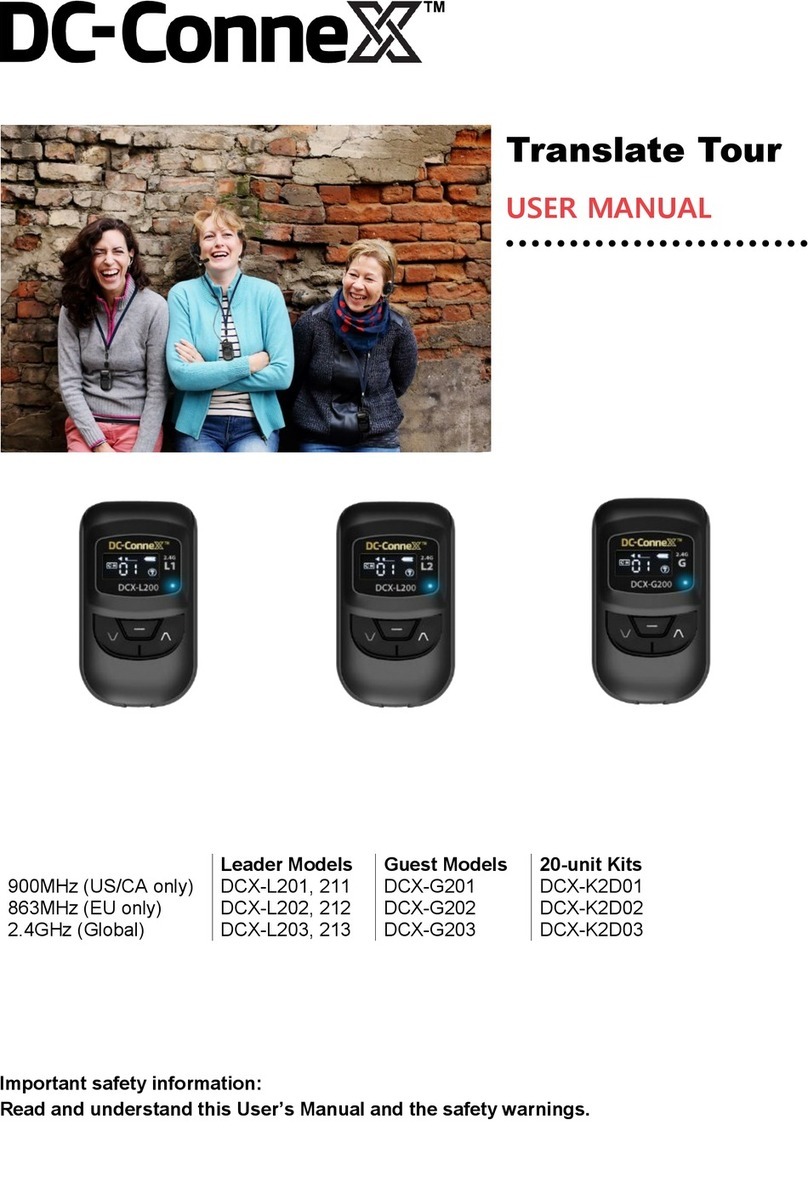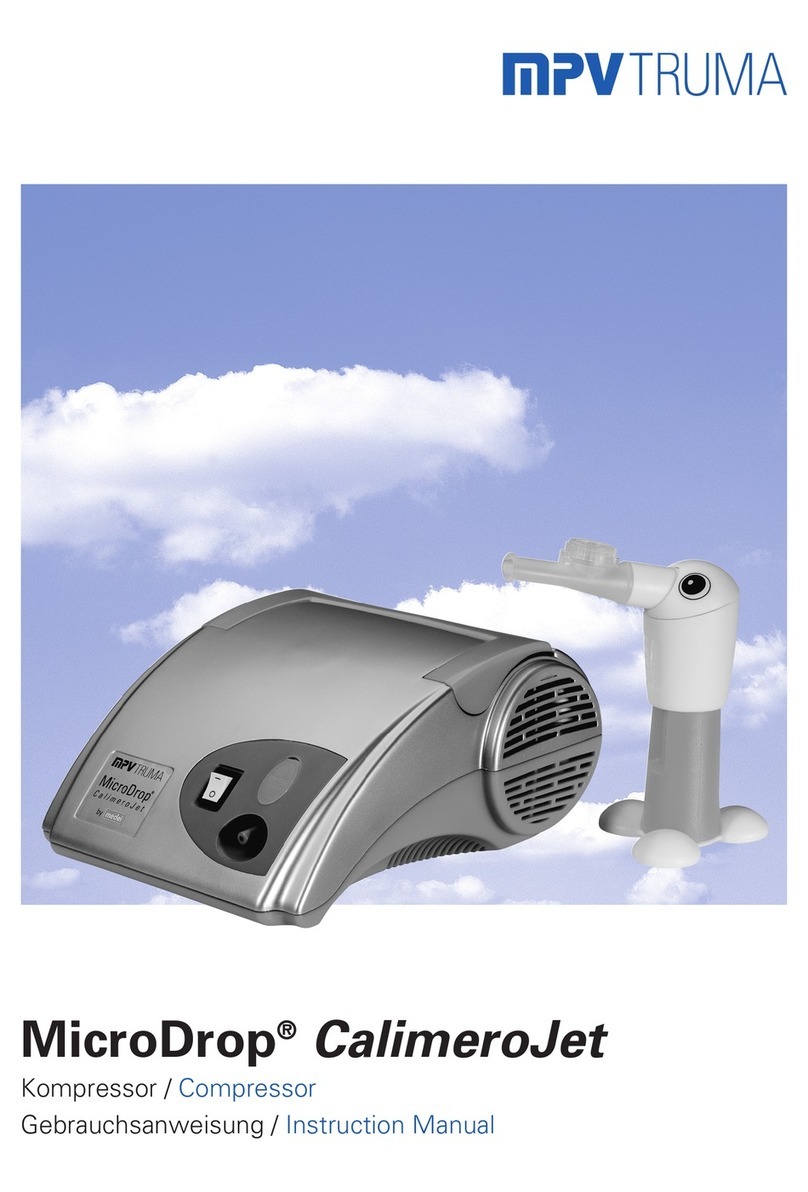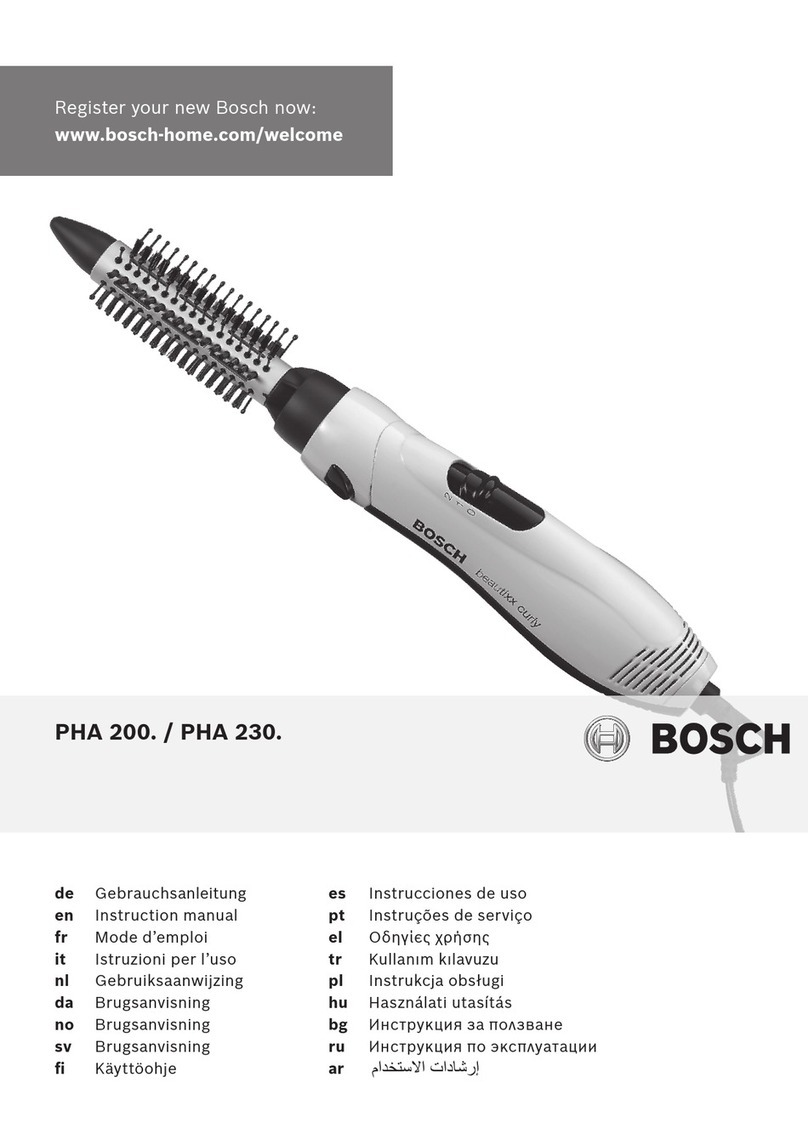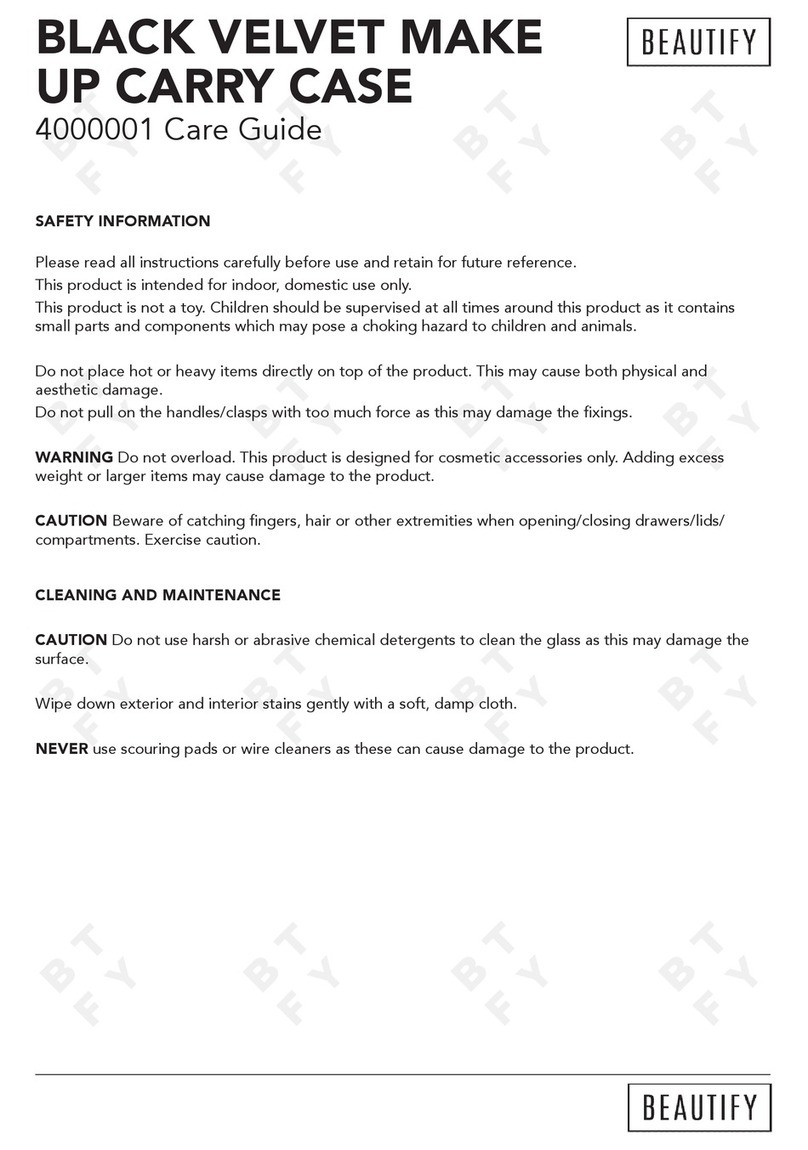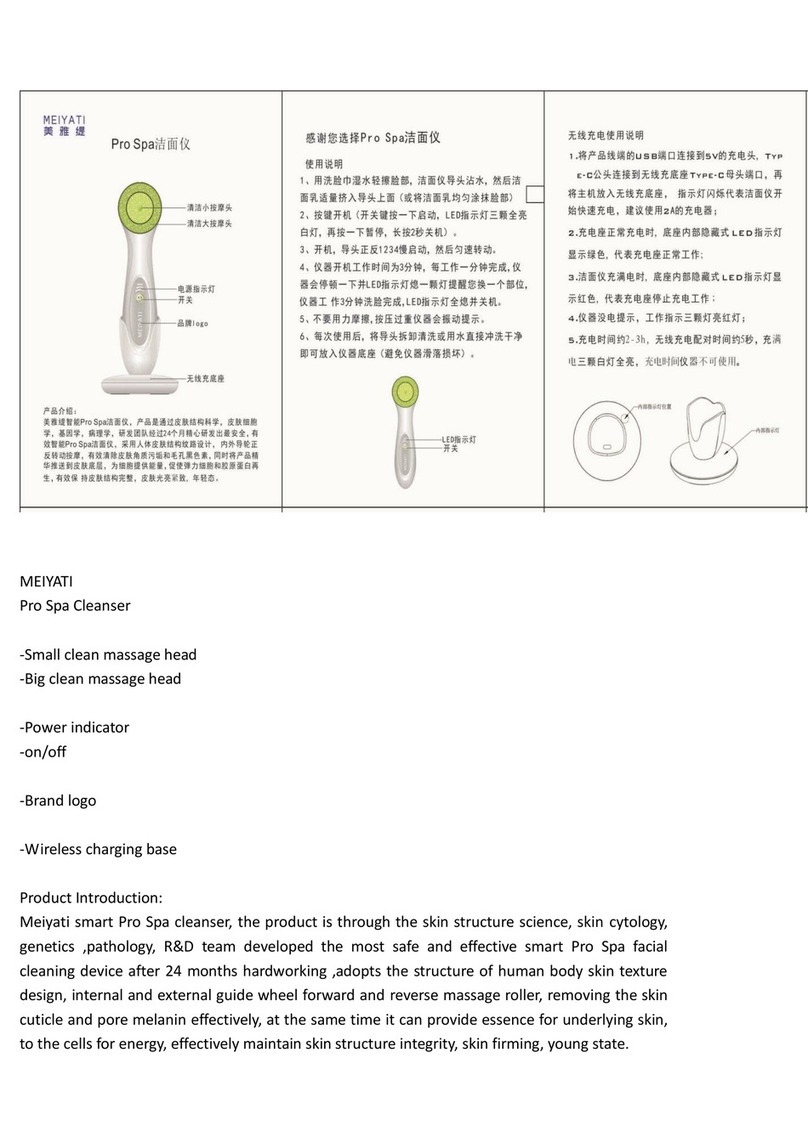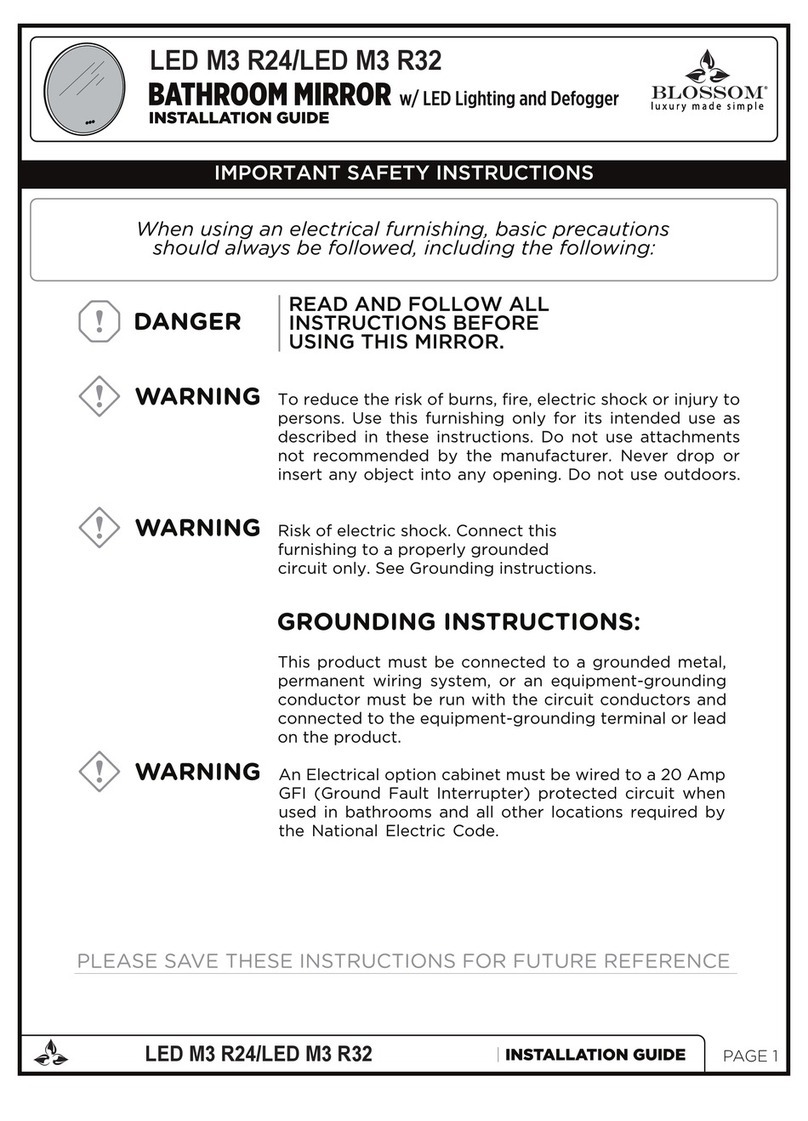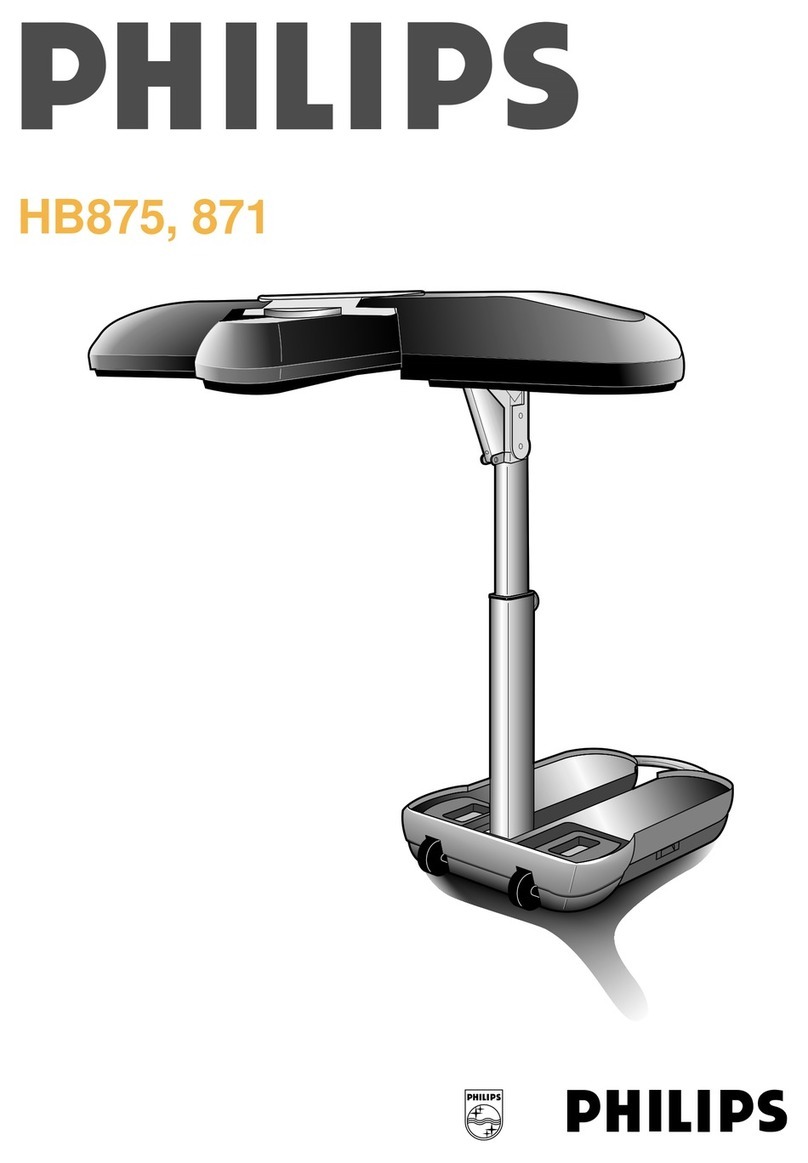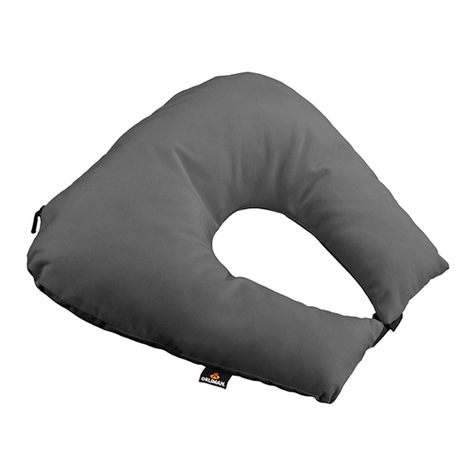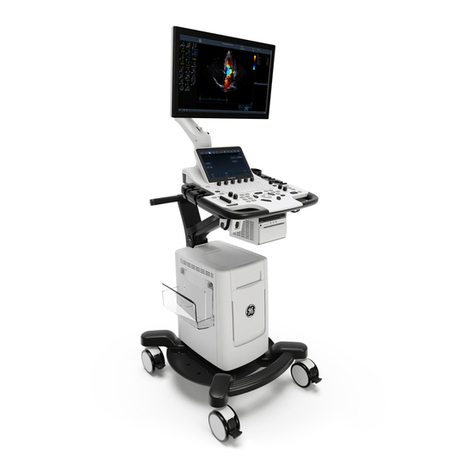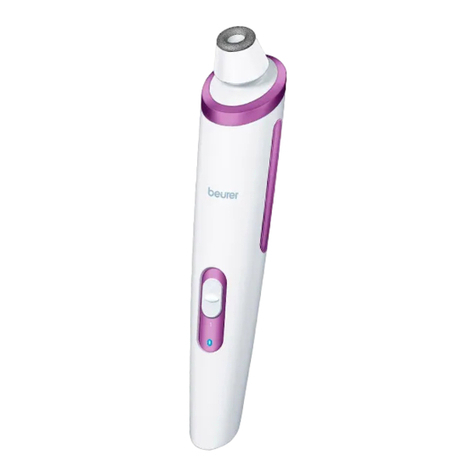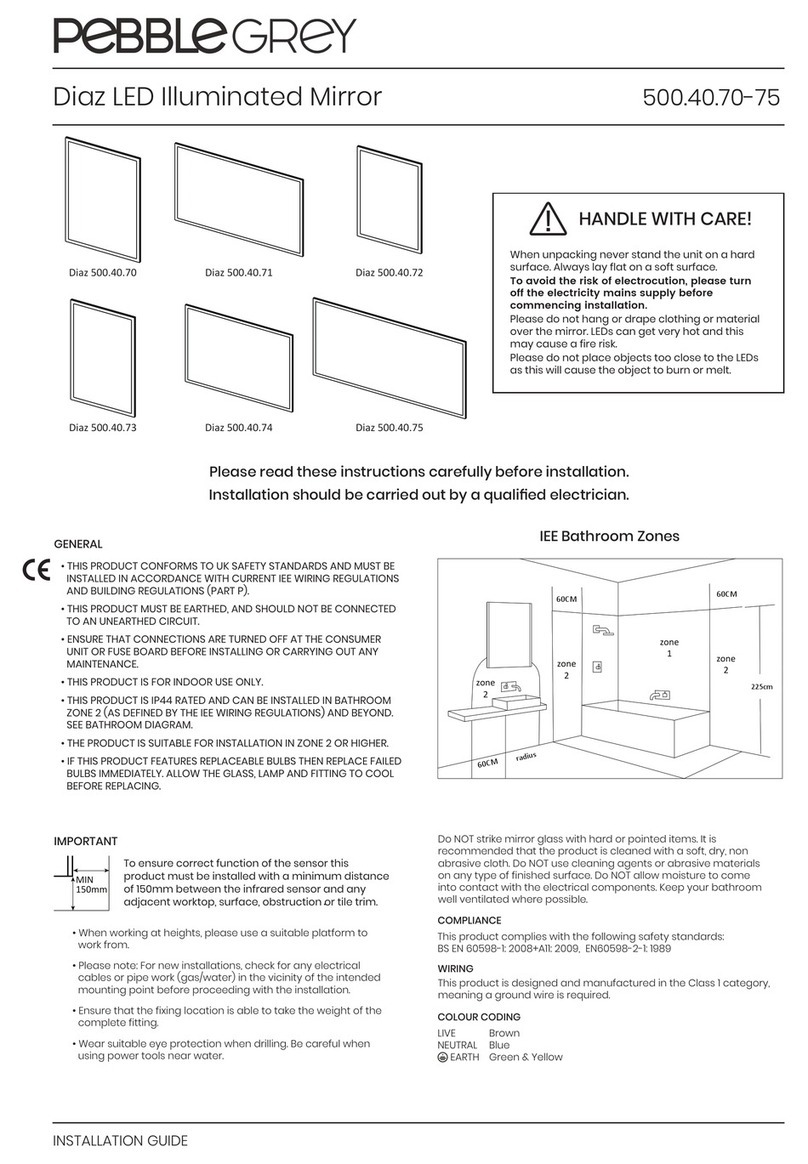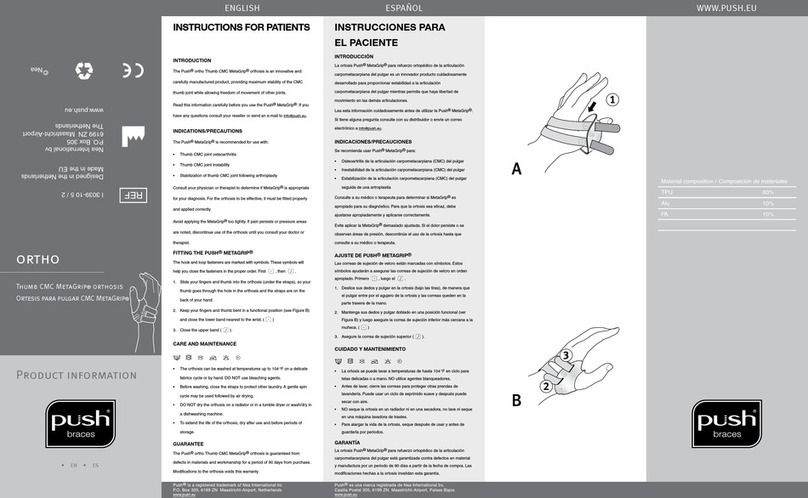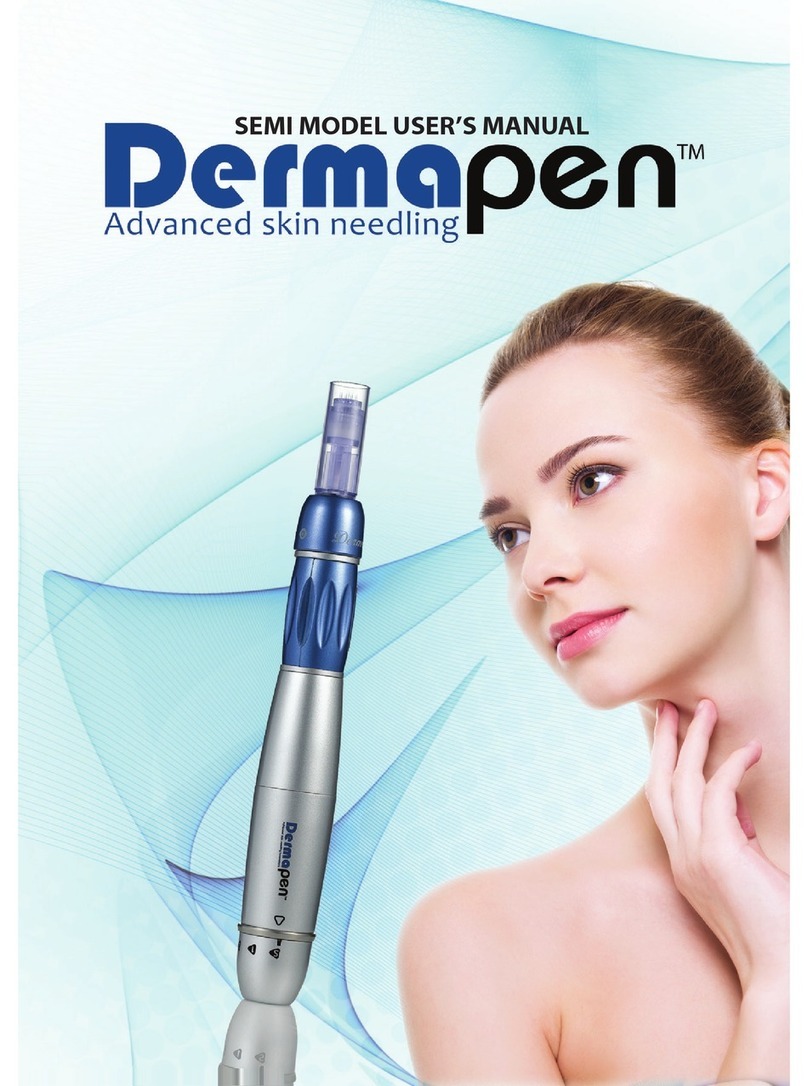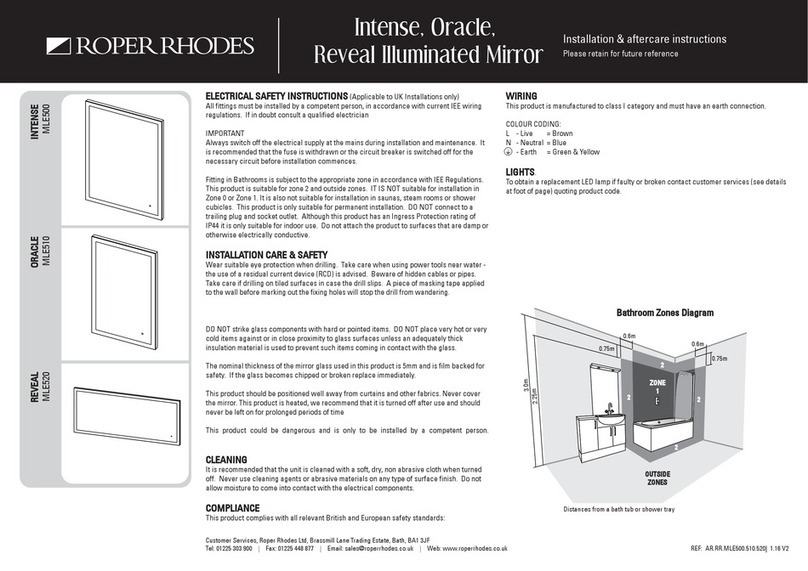Sense4Care STAT-ON User manual

USER MANUAL (Rev 1.3)
March-2019

REV 1.3 – MARCH 2019
2
Company information:
Sense4Care S.L.
Mail Address:
Carrer Tirso de Molina, 36, Office 18.
Cornellà del Llobregat, Barcelona, 08940,
Spain.
Contact information:
•General information: info@sense4care.com
•Technical Support: support@sense4care.com
•Sales: sales@sense4care.com
•Webpage: http://www.sense4care.com
•Telephone: +34-93-492-39-59
User Guide, Rev 1.3. This device has been made under the Council Directive
93/42/EEC, being certified as a Medical Device Class IIa.
Sense4Care guarantees that the device has been built under the ISO 9001:2015
for the design, manufacturing and commercialization of industrial electronic
controls. Furthermore, Sense4Care also guarantees that the device has been
built under the ISO 13485:2016 for the design and manufacturing of electronic
controls as well as medical devices.

REV 1.3 – MARCH 2019
3
Table of content
0. Warnings, care and use instructions..................................................................................... 5
1. Quick start ............................................................................................................................. 6
Download the app......................................................................................................... 6
Press the sensor’s button.............................................................................................. 6
Pair the device with your smartphone.......................................................................... 6
Configure your data....................................................................................................... 7
Place the sensor ............................................................................................................ 7
2. Intended Use ......................................................................................................................... 8
3. About STAT-ON ..................................................................................................................... 9
4. STAT-ON kit components .................................................................................................... 10
The sensor device........................................................................................................ 10
The belt ....................................................................................................................... 10
The charger system ..................................................................................................... 11
5. Patient Use .......................................................................................................................... 12
Location and orientation of the device....................................................................... 12
Sensor interface and modes........................................................................................ 13
5.2.1. Button.................................................................................................................. 13
5.2.2. State LED indicator.............................................................................................. 13
Possible sensor states ................................................................................................. 14
5.3.1. Connected and low battery indication................................................................ 14
5.3.2. Shutdown ............................................................................................................ 14
5.3.3. Configuration pending......................................................................................... 14
5.3.4. Monitoring, sleep and standby ........................................................................... 15
5.3.5. Full memory ........................................................................................................ 15
5.3.6. Synchronization................................................................................................... 15
5.3.7. Format ................................................................................................................. 15
5.3.8. Error..................................................................................................................... 15
Charging the device..................................................................................................... 16
Switching On/Off the system ...................................................................................... 17
Regular use.................................................................................................................. 18
6. Application management.................................................................................................... 19
Device compatibility and downloading the app.......................................................... 19
Managing multiple patients ........................................................................................ 19

REV 1.3 – MARCH 2019
4
Main screen................................................................................................................. 20
Bluetooth area............................................................................................................. 21
Synchronization area................................................................................................... 21
Configuration area ...................................................................................................... 22
6.6.1. PIN configuration................................................................................................. 22
6.6.2. Patient ID............................................................................................................. 22
6.6.3. Age....................................................................................................................... 23
6.6.4. Hoehn & Yahr value............................................................................................. 23
6.6.5. Leg Length ........................................................................................................... 23
6.6.6. Save button ......................................................................................................... 23
6.6.7. Standby button.................................................................................................... 23
6.6.8. Delete button ...................................................................................................... 23
Alarms Area................................................................................................................. 24
Send area..................................................................................................................... 25
7. Reports description............................................................................................................. 26
STAT-ON measurements ............................................................................................. 26
Extended report .......................................................................................................... 28
7.2.1. Summary page..................................................................................................... 28
7.2.2. Graphs ................................................................................................................. 30
Reduced report ........................................................................................................... 37
8. Frequently asked questions (FAQs)..................................................................................... 38
9. Device Labelling................................................................................................................... 39
10. Symbols and labels.............................................................................................................. 40
11. Privacy ................................................................................................................................. 41
12. Technical specifications....................................................................................................... 42
13. Certification......................................................................................................................... 43

REV 1.3 – MARCH 2019
5
0. Warnings, care and use instructions
Please, read carefully the user manual before using the device. Check that everything is correct before using the system.
Use only accessories supplied and/or authorized by the manufacturer
The product must be repaired by Authorized staff by the manufacturer
Equipment modifications must be done by Authorized staff by manufacturer
This device must be used by health professional staff.
Device Sensor
Do not expose the system to liquids. Liquid exposure may permanently damage the system.
Do not use the system under 0ºC conditions or over 40ºC. Wait at least two hours for the system to return to room temperature before it
is turned on.
Operate system with room humidity between 45% and 85%.
Keep the electrical cord away from walking paths.
Improper routing of cabling may result in a choking hazard.
Do not put metallic elements on the charging pad.
Do not use in oxygen rich-environments.
Do not use with inflammable agents.
Do not use with flammable anaesthetics.
Preferably use in waking hours. Do not use the sensor in contact sports. Manufacturers recommend not to sleep with the sensor since it
can be oppressive and might cause physiological discomfort. The sensor must be managed only in clinical environments.
Do not use the sensor in medical interventions (surgical procedures, X-ray sessions, magnetic resonances…).
The sensor and the smartphone must be at a distance of 1.5 meters from any other medical device when they communicate in order to
not to produce interferences.
Limited warranty covers any defect in the device under normal use during warranty period (2 years). Warranty does not cover any problem
that is caused by conditions, malfunctioning or damage not resulting from normal use. It is not allowed to open the enclosure, otherwise,
Limited warranty will not be applied.
Battery is non-replaceable. The box is closed and it only can be opened by qualified personnel. Contact the manufacturer support in case
of some malfunctioning of the battery.
Use the battery supplied and/or authorized by the manufacturer
There is no risk of reciprocal interference from the presence of the equipment during investigations or treatment
Belt
Ironing allowed but use low heat
Do not dry clean
Maximum washing temperature up to 100ºC
Do not bleach
Do not tumble dry
Charge system
Do not use another charger. The charger base may be damaged.
The user must plug the charger system in a position that enables to unplug it easily.
Disinfection Procedure
The device is not in contact with the patient. It is not necessary to clean the device but we recommend to clean it after some use with wet
wipes.
Do not submerge the device into water for cleaning up the device.
Do not use abrasives as they may damage the sensor.
The multiple cleaning of the device does not affect the integrity of the case material.
Isolation
Type BF. Applicable parts are the sensor device and the belt.
Disposal instructions
Affixed to this device in accordance with European Council Directives 2002/96/EC.
These directives call for separate collection and disposal of electrical and electronic equipment. Sorting such waste and removing it
from other forms of waste lessens the contribution of potentially toxic substances into municipal disposal systems and into the larger
ecosystem. Please, return to SENSE4CARE S.L. at the end of its operating life.
Contraindications
None known.
SENSE4CARE S.L. 2012-2019, All Rights Reserved.

REV 1.3 – MARCH 2019
6
1. Quick start
Download the app
Please use the QR code or go to:
https://www.sense4care.com/support/
Figure 1. QR Code to download User Manual and Apps
Download the STAT-ON app. It requires Android 5 or higher or iOS 10.2 or higher.
Press the sensor’s button
Press the button and wait until the LED blinks in white. IMPORTANT NOTE: The button is only
used to wake up the system the first time of use and to annotate EVENTS. It is not a “standby”
button.
Pair the device with your smartphone
Open the app, push the Bluetooth button on the app.
Figure 2. Upper screen capture: Bluetooth area and Battery indicator
Search your STAT-ON device “STATONxx” where xx are the last 2 numbers of the Serial
Number (see STAT-ON label at the sensor, S/N). The pin is formed with the last 6 numbers of the
Serial Number.

REV 1.3 – MARCH 2019
7
Configure your data
Please, fill the missing information in order to adjust the algorithms press the ‘save’ button. Then
the sensor should stop blinking in white colour, meaning it has been configured. Once the sensor
detects movement, its LED blinks in Green colour. Now the sensor is already working.
Figure 3. Configuration menu
Place the sensor
Place the sensor correctly within the belt aperture and put on the belt. The sensor should be
placed at the left side of the waist above the iliac crest as shown in the Figure 4.
Figure 4. Placement of the sensor

REV 1.3 – MARCH 2019
8
2. Intended Use
STAT-ON is an wearable inertial device, managed by a doctor and worn by the patient. The
sensor stores the results of the algorithms that are executed internally and that quantify the
severity and distribution of the Parkinson’s Disease patient’s symptoms.

REV 1.3 – MARCH 2019
9
3. About STAT-ON
The STAT-ON system consists of a monitoring device, its base charger, a belt, and a mobile
application. The system provides numerical and graphical information of the motor symptoms
associated with Parkinson's disease. Furthermore, data related to the general motor activity of
the patient are calculated.
The device collects the inertial signals of the patient's movement continuously, processes it in
real time by means of artificial intelligence algorithms and stores the results in its internal
memory. The sensor must be only managed in clinical environments and only health staff can
operate the App and the device.
The smartphone application connects to the STAT-ON device via Bluetooth (BLE). The App is
used both for configuring the system and for downloading the data previously generated by the
sensor. The mobile application can send the data enclosed into a report by email or digital
support to any user, caregiver, therapist or neurologist.
STAT-ON has been developed under the PARK-IT project, funded by the European Commission
(Grant Agreement: 756861 — PARK-IT 2.0 — H2020-SMEInst-2016-2017/H2020-SMEINST-2-2016-2017).

REV 1.3 – MARCH 2019
10
4. STAT-ON kit components
The STAT-ON is composed by the following components:
The sensor device
The sensor device (Figure 5), also called STAT-ON, has been developed under the PARK-IT
project. The sensor is a 90x12.75x62.5mm3device with 83g of weight. It is composed by an ultra-
low power high-performance nano-accelerometer, a microcontroller, and a Bluetooth Low
Energy system, among others. The sensor has a battery life of seven days continuously in normal
conditions. Manufacturer recommends to charge the device every day in case of forgetting
doing it every 6-7 days. The system is waterproof with a IP65 protection.
Figure 5. The sensor device
The belt
The belt is made of Polyester (94%) and elastane (6%). Its fabric allows a complete adjustment
to the body while being comfortable. Hook and loop fastener is used to fasten the belt securely.
The belt has passed the Oeko-Tex® Standard 100 tests, guaranteeing no toxicity of the belt. The
belt must be worn directly over a t-shirt or a thin clothing.

REV 1.3 – MARCH 2019
11
Figure 6. Specific belt
The charger system
The STAT-ON device can be charged wirelessly. It is required to use the wireless charger F8M747
from Belkin as it is compatible with STAT-ON. The base dimensions are 11.6x11.6x1.29mm3.
The AC Charger connected to the base charger must have the following parameters:
Standard: IEC-60601 Medical electrical equipment
Output Voltage: 5V
Output current: 2A
Connection: Micro USB – B
A charger kit (Base+AC Charger) might be purchased at www.sense4care.com.
Figure 7. Top and Bottom view of the wireless charger base

REV 1.3 – MARCH 2019
12
5. Operator Use
STAT-ON is a waist-worn inertial device that collects the outcomes of several algorithms that are
based on the computation of inertial signal. In other words, it collects data from a triaxial
accelerometer, which is embedded within the device. In this section explained, it is the way of
using the device.
It is highly recommended to follow the mobile app instructions at the beginning, which will
conduct you through the first steps required for the system to work.
Location and orientation of the device
The belt, which is provided with the sensor, must be used to attach the sensor to the user. The
sensor must be worn on the left hip and its largest flat side should be facing the user. The status
LED, the button and the label should be facing upwards. The following image shows how the
sensor should be placed.
Figure 8. Location and orientation of the sensor
The sensor must be placed on the left part of the waist. If the sensor is located in a different
way that the showed in Figure 8, measurements collected might not be valid.
The sensor (within the belt) should be worn over a thin clothing as shown in Figure 8. The belt
should be fastened tightly to prevent the sensor from moving, but allowing the user to be
comfortable with it. The belt has a hole for viewing the status LED and enables pressing the
event-button. It was designed to prevent the sensor from sliding out of it.

REV 1.3 – MARCH 2019
13
Sensor interface and modes
As shown in the following figure, the sensor device has a button and two led indicators next to
the STAT-ON logo. The device also contains a small vibrator motor and a buzzer.
Figure 9. Sensor’s interface
5.2.1. Button
The device button must be pressed by the operator (health professional or caregiver) and not
by the patient. It has two uses:
1- Turn on the sensor when it is in shutdown mode (See Section 5.3.2 for Shutdown mode).
2- Mark user events (user events are optionally specified by the medical professional, e.g.
mark medication intake events, meals, sleep, etc.).
3- Stop an alarm after it triggers.
The device will vibrate shortly after the button is pressed.
5.2.2. State LED indicator
The colour pattern of the state LED specifies the current status of the sensor device. The
following table describes the possible states of the sensor and its colour sequences.
Main state
Secondary state
Sequence
Description
SHUTDOWN -
Always off
CONFIGURATION_PENDING -
White blink
CONFIGURATION_PENDING CONNECTED
White-blue
CONFIGURATION_PENDING LOW_BATTERY
White-magenta
MONITORING -
Green blink
MONITORING CONNECTED
Green-blue

REV 1.3 – MARCH 2019
14
MONITORING LOW_BATTERY
Green-magenta
SLEEP -
Always off
SLEEP CONNECTED
Blue blink
SLEEP LOW_BATTERY
Magenta blink
MEMORY_FULL -
Red blink
MEMORY_FULL CONNECTED
Red-blue
MEMORY_FULL LOW_BATTERY
Red-magenta
SYNCHRONIZATION -
Fast blue blink
FORMAT -
Always blue
ERROR -
Always red
Possible sensor states
5.3.1. Connected and low battery indication
The sensor will indicate that has an active Bluetooth connection or a low battery level by blinking
the led in blue or magenta colour respectively. These indications will be combined with the
sensor’s current main state. For example, if the sensor is monitoring while having low battery,
it will not only blink in green colour but alternate green and magenta colours.
5.3.2. Shutdown
The sensor will come in this state initially. While in this state, the sensor will do nothing until its
button is pressed. To power it up, place the sensor on its charging pad and make sure the
charging process starts (the orange led must switch on), then wait until the battery is fully
charged (the orange led switches off). Then, press the sensor’s button and it should enter
CONFIGURATION_PENDING state.
In addition, the sensor will automatically enter this state if the battery level is too low, to power
it up, the button should be pressed after charging the sensor.
5.3.3. Configuration pending
When the device is in this state, its status LED will blink in white colour. The device will not record
data nor execute algorithms while in this state. In order to leave this state and start monitoring,

REV 1.3 – MARCH 2019
15
the user should configure the following parameters: Patient ID, Age, Leg Length and Hoehn &
Yahr value. These should be configured through the STAT-ON App via Bluetooth. Read section
6.6 of this document for detailed information on how to configure the sensor.
Once the sensor is configured, it will alternate SLEEP and MONITORING states, which are the
normal operation states.
5.3.4. Monitoring, sleep and standby
When the sensor is correctly configured and has detected some movement, it enters
MONITORING state. In this state, the patient’s movement is monitored and the algorithms are
executed. In addition, its status LED will blink in green colour. This is the normal operation state
and implies that the sensor is running correctly. However, if no movement is detected for some
minutes or if the sensor is charging, the device may enter SLEEP state in order to save power.
The device will resume monitoring after detecting any movement.
Given that the power save mode is enabled and disabled automatically; the user does not need
to power the device on or off.
The STANDBY state is an optional state that can be enabled once the sensor is correctly
configured. It can be enabled using the <Standby> button at the configuration area. This option
forces the sensor to pause monitoring without losing its configuration (see section 6.6.7). Once
the sensor’s button is pressed, the sensor will resume monitoring.
5.3.5. Full memory
If the internal memory of the device fills up, its status led will blink in red colour. Since there is
no space in memory, the sensor will not record any new data. It is therefore recommended to
synchronize the device data using the STAT-ON App. After the data is sent, the device memory
will be automatically cleared and the sensor will be able to monitor again. Formatting (clearing
the memory of the sensor) can be also done, but in this case, the stored data not yet
synchronized will be completely lost.
5.3.6. Synchronization
The synchronization process consists of transferring the stored data from the sensor to the
smartphone. This can only be done by using the STAT-ON App (see section 6.5- Synchronization
Area). While this process is ongoing, the status led will quickly blink in blue colour and the App
will show a progress bar. After receiving all the data from the sensor, the app will generate the
corresponding files and reports automatically.
5.3.7. Format
The format process completely clears the device memory. Formatting the sensor is only
recommended if the device will not be used for a long time. Synchronizing the data contained
in the sensor is recommended before starting the format process; otherwise, all the stored data
not yet transferred to the smartphone will be lost. After formatting the device, its previous
configuration will also be lost, thus the sensor needs to be configured again to re-enable it. The
format sequence can be started by using the App, by pressing the <DELETE> button (see section
6.6.8- Delete button).
5.3.8. Error
If the sensor detects an internal system malfunction, it will enter ERROR state. The status led
will stay in red colour. Most processes and operations, like monitoring or executing algorithms,

REV 1.3 – MARCH 2019
16
are interrupted if an error happens. When the sensor connects with the STAT-ON App while in
error state, it will transfer the error code to the App and the App will offer to perform a sensor
reset. If the error persists after the reset or occurs periodically, please write down the error code
displayed on the App and contact support@sense4care.com.
Charging the device
The following steps describe how to charge the STAT-ON sensor:
1- Place the charging Pad on the table making sure the white part is facing down. Plug the
provided USB cable to the charging pad and plug the other end into a power outlet.
2- Place the STAT-ON sensor on the centre of the charging pad. The sensor’s largest flat
side marked with a (()) symbol should be touching the charging pad.
3- While the battery is charging, the sensor’s orange LED indicator will illuminate. In
addition, the led indicator on the charging pad will blink in yellow colour. The charging
process can last up to 8 hours.
4- Once the battery is fully charged, the orange LED indicator from the sensor will switch
off. The LED indicator from the charging pad will stay enabled and yellow, without
blinking.
Figure 10. Do’s and Don’ts
Charging State
Sensor LED
Charging pad LED
CORRECTLY CHARGING
(always orange)
(orange blink)
END OF CHARGE
(always off)
(always orange)
POWER SUPPLY ERROR
(always off)
(red blink)
GENERAL ERROR
(always off)
(always red)

REV 1.3 – MARCH 2019
17
The previous table describes the possible states indicated by the sensor and the charging pad.
The sensor does only charge when its LED is ON.
Additional charging considerations:
•Do not place any object on the charging pad, whether the device is being charged or
not.
•It is possible to charge the sensor inside the specific belt. However, the sensor may need
to be located more precisely at the centre of the charging pad. In addition, its internal
temperature may get higher, thus interrupting the charging process.
•In case the POWER SUPPLY ERROR occurs, make sure that the AC to USB adapter used
is the one provided by Sense4Care.
•In case the GENERAL ERROR occurs, check the battery level and, if it is still low, take the
sensor from the charging pad and place it again. Make sure the sensor is placed on the
centre of the charging pad.
•If any problem persists, contact Sense4Care for technical support.
Switching On/Off the system
After unpacking the system, the sensor device will stand in shutdown mode. Before using the
sensor at first time, please fully charge the device battery and press the sensor’s button to switch
it on.
Once the button is pressed, the system will enter in the configuration mode, from which the
user will be able to configure the sensor with the App. Then, the system will work autonomously.
That means that the user will not have to switch it on or off.
The system will enter sleep mode if no movement has been detected for some minutes. It will
automatically exit this mode and start monitoring after movement is detected. This work mode
allows saving energy, thus extending the autonomy of the sensor.
If the user expects not to use the sensor in a long time, keeping it in shutdown mode is
recommended. Shutdown mode is activated after formatting the device using the STAT-ON App
(see section 5.3.7- Format). It is recommended to synchronize all the data before formatting in
order not to permanently lose all the data stored in the sensor. It is also important to charge the
device battery before switching it off.

REV 1.3 – MARCH 2019
18
Regular use
The STAT-ON system is a wearable inertial device that monitors the symptoms of PD patients.
This is a medical device and only health professionals must manage it. Outcomes of the sensor
might be used to adjust or evaluate a therapy, to adjust the diets of the patient, or evaluate the
result of the therapy.
The system works autonomously, that is, the patient does not need to interact with the device.
The health professional will provide the sensor to the user correctly configured (see sections
5.3.3 and 5.3.4). The user will wear the sensor for registering the symptoms of PD during the
days of the study proposed by the health professional.
El personal sanitario le puede pedir al cuidador que presione el botón en un momento
determinado, como el almuerzo, la cena, la ingesta de medicamentos ...
The healthcare staff can ask the caregiver to press the button at a certain time, such as lunch,
dinner, medicine intake, etc.
The patient should wear use the system a minimum of 3 days and a minimum of 24 hours within
these 3 days to generate enough inertial data to personalize the algorithms. From this moment,
a report can be generated at any time. The doctor will download to his/her mobile phone the
information generated by the sensor at the doctor’s office with the STAT-ON application, which
will automatically generate a report of the motor state and symptoms during the days of study.
After this step, the sensor will enter in the initial state, being necessary to configure the app
parameters in order to put on the sensor in other patient.

REV 1.3 – MARCH 2019
19
6. Application management
Device compatibility and downloading the app
The STAT-ON App can run on any Smartphone or tablet running Android 5 or higher, the device
must support Bluetooth Low Energy (BLE) and 1GB RAM minimum.
The STAT-ON device also works in iOS for Apple devices. It is required to use iOS 10.2 or higher.
The app can be downloaded at Google Play (Android) or the App Store (iOS), search for “STAT-
ON”, and make sure its developer is Sense4Care. Press <install> and the app will be automatically
downloaded and installed.
Managing multiple patients
As stated in the Section 2 (Intended Use), the STAT-ON device is suitable for evaluating the
motor state of a patient with Parkinson’s disease. The value of the “Patient ID” item, which can
be set through the App’s Configuration Area, is used to associate all the data related to each
user. There is no limit of number of patients registered by the smartphone at the same time, it
depends on the memory of the smartphone, however, we recommend to use no more than 6
patients.
The Patient ID number must be changed each time a sensor is given to a different patient,
moreover, it is highly recommended to keep a record containing each patient’s personal data
together with its Patient ID value in order to ensure that the same value is not shared by
different patients.
In order to simplify the situation where a single user (usually a healthcare worker) handles
various sensors and multiple patients, the results and reports are obtained solely from the data
transferred during the current synchronization event. Therefore, no historical record is kept
inside the App’s database (i.e. the data monitored is used for generating the reports and then
discarded and not used anymore). However, the App does store all the generated reports (.pdf
and .csv) inside the STAT-ON specific directory at the smartphone memory. Given the generated
reports are tagged using the Patient ID number, it is still important to keep a value for each user
and configure the sensor accordingly.

REV 1.3 – MARCH 2019
20
Main screen
Figure 11. Main screen caption
After opening the App, it shows the main screen, which enables the access to all the areas and
features of the STAT-ON App. It also indicates whether there is an active connection with a
sensor and shows its battery level. While on the main screen, the App connects automatically to
the paired STAT-ON sensor. When a sensor device is connected, the Bluetooth area and battery
indicators change their colour. “Connected” appears under the Bluetooth logo and the battery
level is shown as well.
Figure 12. Top of the main screen when connected
Table of contents
